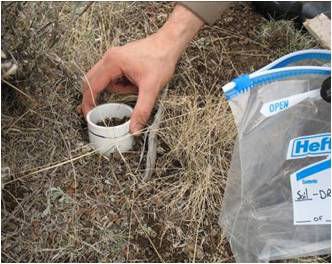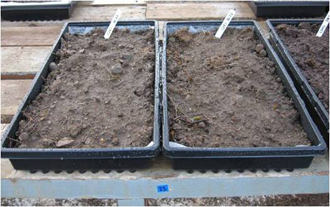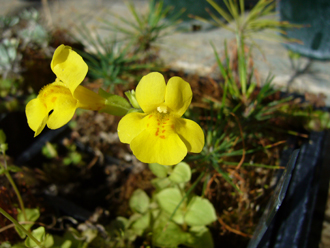Researchers:
Corinne Duncan, M.S. candidate, Oregon State University, [email protected]
Jane Mangold, Ecologist, USDA Agricultural Research Service, Burns, Oregon, 541-573-4073, http://oregonstate.edu/Dept/EOARC/abouthome/Mangold.htm
Rick Miller, Dave Pyke, Jaime Ratchford
Study Dates:
2006-2008
SageSTEP Study Plots:
Study Design and Objectives:
Expansion of western juniper (Juniperus occidentalis) into the sagebrush steppe has resulted in significant changes in understory composition. A consequence of increased western juniper dominance may be a depletion of the seed bank. Depletion is problematic because it has the potential to lower site resiliency through a reduction of species availability. Research conducted by Corinne Duncan and Dr. Richard Miller of Oregon State University and Dr. David Pyke of the U.S. Geological Survey evaluated the effects of the relative abundance of western juniper on the soil seed bank.
Questions addressed in this study include:
- Does the number of ruderal (weedy) species increase along a gradient of western juniper abundance?
- Does seed density decrease as western juniper abundance increases?
Two eastern Oregon sagebrush steppe sites were chosen to represent the juniper woodland-sagebrush steppe region, the control plots of the SageSTEP Devine Ridge and Bridge Creek study sites. These sites displayed a range of western juniper canopy cover from open to closed stands. Soil samples were collected at these sites in the fall of 2006 and 2007 and subjected to both cold-wet and warm-dry stratification. Germination of the samples occurred over a period of eight months under greenhouse conditions, and then linear regression was employed to evaluate relationships.
No statistically significant relationships were detected between western juniper cover and ruderal species richness at either site in either year. The results for seed density were more complex. In 2006, western juniper cover was strongly related to seed density at Devine Ridge but in 2007 there was no evidence of a correlation. At Bridge Creek in 2006, there was a weak relationship between increasing western juniper cover and decreasing seed density but in the second year no relationship was detected.
During the period of this study, the degree of western juniper cover did not appear to affect ruderal species richness. However, seed density of the seed bank did appear to be affected. Positive relationships were detected at both sites during the first year of the study in which precipitation was above average. It is possible that during a wet year understory response, as measured by seed density, is greater in areas of low western juniper cover indicating that site resilience may be higher in areas of low western juniper cover. Though three out of four related studies concur, a lengthier period of study is required to test this hypothesis.


Collection of seed samples.

Seeds were germinated in a greenhouse.

Seep monkeyflower (mimulus guttatus) in bloom in the greenhouse.
This study was part of Corinne Duncan’s master’s thesis:
Duncan, C.M. 2008. Seed Bank Response to Juniper Expansion in the Semi-arid Lands of Oregon, USA. M.S. Thesis, Oregon State University, Corvallis, Oregon. Full text available here.
